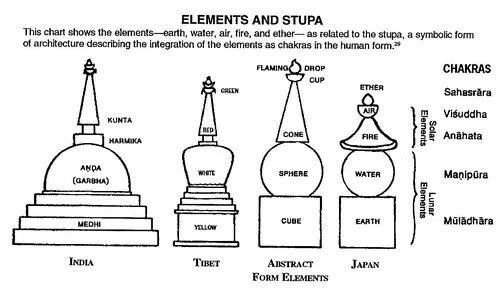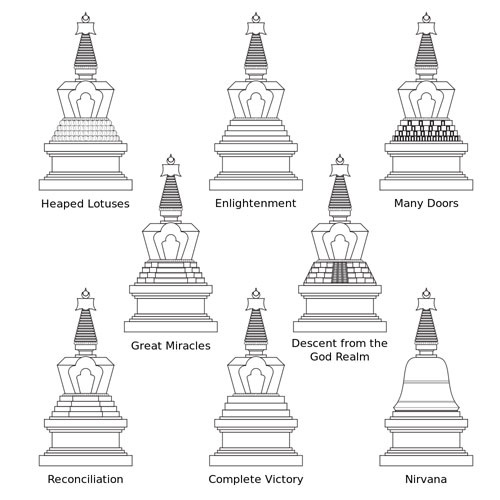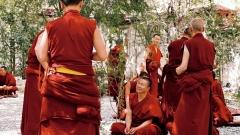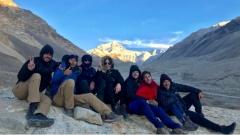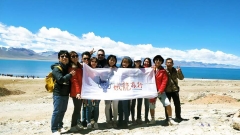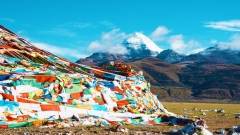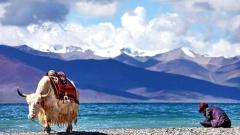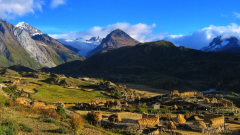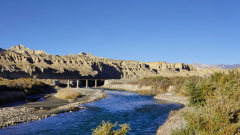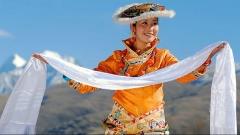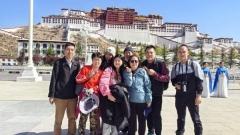When travellers arrive in the high plateau of Tibet, one of the most evocative and enduring images they encounter is the whitewashed, gilded monument known locally as a chorten (in Tibetan, often spelled “cho-ten”) or more broadly as a stupa. These stupas are far more than architectural curiosities – they are powerful symbols of Buddhist devotion, markers of spiritual geography, and living monuments that encode centuries of belief, culture and history.
What Is a Tibetan Stupa?
The word “stupa” originates from Sanskrit, meaning “to heap up” or “pile up,” originally referring to a mound-like structure.
In Tibetan Buddhist usage the term is often translated as chorten, derived from cho (offering) + ten (object) — hence “object of offering.”
In Tibet the stupa/chorten performs multiple functions:
- As a reliquary for sacred remains or texts.
- As a symbolic embodiment of the Buddha’s enlightened body, speech and mind, and of the universal path of Dharma.
- As a place of pilgrimage and devotional action: circumambulation (walking around the stupa), prayer wheel spinning and offerings.
In Tibetan cultural context, the stupa is also a way to physically accumulate merit: building, commissioning, circumambulating a stupa are all regarded as spiritually beneficial acts.)
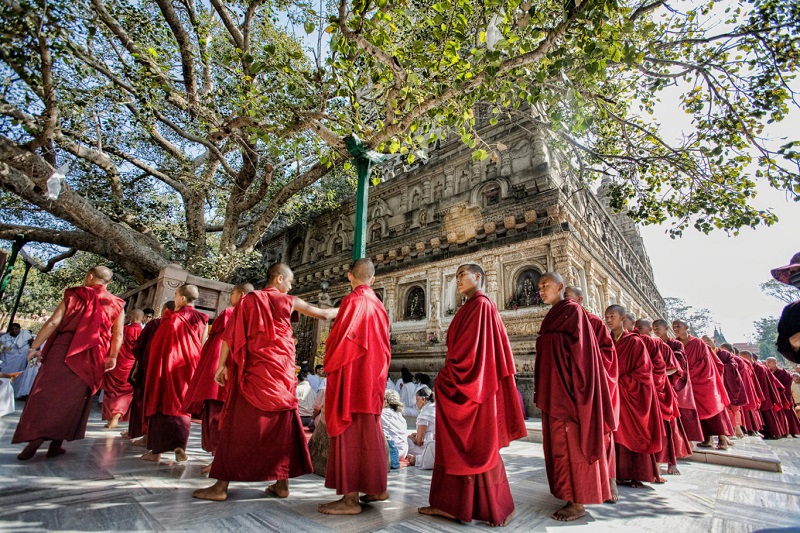
Monks surrounding a Tibetan Stupa
The Origins and Symbolism of the Stupa
The origins of the stupa can be traced back to the funerary mounds of ancient India. Before Buddhism, burial mounds and tumuli were erected for notable kings or heroes; these in turn influenced the earliest Buddhist stupas.
Within Buddhism, the historical tradition records that after the passing (parinirvana) of the Gautama Buddha, devotees placed his relics within a stupa so that pilgrims could continue to venerate his memory and teachings.
In Tibetan Buddhism the architectural form of the stupa was infused with layered symbolism:
- The base often represents earth — stability, foundation.
- The dome or bulb can represent water or openness.
- The spire represents fire, rising upwards toward enlightenment.
- The canopy or parasol and crescent moon symbol often represent wind and void/space, or the transcendence of duality.
Thus the form of the stupa is not just architectural but symbolic: it visualises the spiritual journey from grounded foundation to enlightened release, and simultaneously reflects the five-elements cosmology that is common in Tibetan thought.
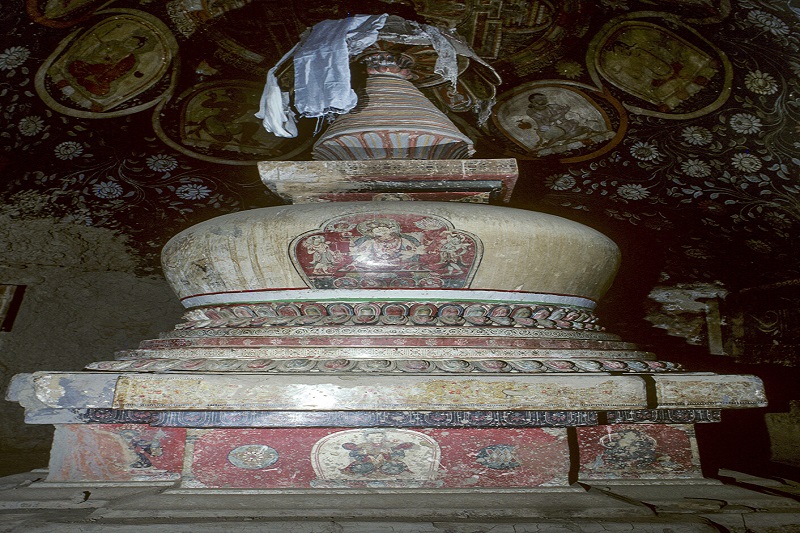
Tibetan Stupa
Tibetan Stupas: Eight Classical Types
One of the distinctive features of the Tibetan stupa tradition is the classification of eight major types of chortens (stupas), each commemorating a major event in the life of the Buddha. This typology gives both form and meaning to the monuments as pilgrims encounter them on site.
Here is a summary of these eight types:
- Lotus Blossom Stupa (Stupa of Heaped Lotuses) – Symbolises the birth of the Buddha, often depicted with a base of lotus-petal motifs.
- Enlightenment Stupa (Bodhi Stupa) – Marks the moment of attaining enlightenment under the Bodhi tree.
- Stupa of Many Doors (Stupa of First Teaching) – Represents the Buddha’s first sermon to his five disciples at Sarnath, symbolised by many doorways or levels.
- Stupa of Descent from the God Realm – Commemorates the Buddha’s return from teaching his deceased mother in the heavenly realm, often featuring a ladder motif.
- Stupa of Great Miracles (Stupa of Conquest of the Tirthikas) – Marks the miracles performed by the Buddha to convince various teachers and convert doubters.
- Stupa of Reconciliation – Symbolises the restoration of harmony among the monastic Sangha when disputes arose.
- Stupa of Complete Victory – Celebrates the extension of Buddha’s life at the request of his followers—represented by three circular layers.
- Stupa of Nirvana – Commemorates the Buddha’s passing into parinirvana in Kushinagar, often bell-shaped and symbolising final release.
For international visitors, recognising these forms enriches the experience: from the simple bell-shaped Nirvana stupa to the tiered lotus-flower stupa, each shape carries meaning and invites reflection.
Tibetan Stupa Architecture: Form Meets Function
When you stand before a Tibetan stupa, you are witnessing more than a monumental object. The architectural details embody doctrine:
- Many Tibetan stupas have a central “tree of life” post (Tibetan sog shing) running through their core, symbolising the subtle channel of spiritual energy.
- Inside some stupas lie relics of lamas, sacred texts, symbolic statues, ritual offerings — making the structure a saintly treasure-house.
- The spire of thirteen rings in some Tibetan stupas signifies the thirteen bodhisattva stages that lead to full Buddhahood.
- The top ornament including the parasol, sun and moon, flame-jewel motif symbolises the culmination of the enlightened path.
For travellers, this means that the stupas one encounters in Tibet are seldom purely decorative. They are rich with meaning, intentionally orientated, and carefully placed within the landscape. Walking around one (known as kora in Tibetan) becomes a meditation, a pilgrimage practice as well as a visual experience.
Why Tibetan Stupas Matter for Travellers
Beyond their spiritual purpose, Tibetan stupas hold several attractions and resonances for the international visitor:
- Cultural Insight: These structures are living markers of Tibet’s Buddhist identity. Observing pilgrims circumambulate, prostrate or spin prayer wheels around a stupa opens a window into Tibetan religious life.
- Architectural Beauty: The white-washed walls, gold-tipped spires, colourful prayer flags and panoramic Himalayan backdrops make stupas photogenic and evocative.
- Spiritual Atmosphere: Even for non-Buddhists, being in the presence of a stupa invites reflection — on history, on impermanence, on the human journey.
- Pilgrimage Routes: Many stupas are located at strategic pilgrimage sites or along routes; visiting them offers a structured way to explore Tibet beyond the major towns.
- Merit and Mindfulness: In Tibetan belief building, sponsoring or visiting a stupa is an act of generating merit. While visitors may not subscribe to this view, the idea helps frame the experience as more than sightseeing.
Famous Tibetan Stupas to Visit
Several stupas in Tibet stand out for their historical significance or architectural grandeur. Here are three must-see examples:
Kumbum Stupa (Gyantse)
Located at the Pelkor Chöde Monastery in Gyantse, this stupa complex is often described as the “Ten Thousand Buddha Pagoda”. It is notable for its multi-tiered structure, numerous small chapels and vivid murals. This is one of the largest and most visually rich stupa sites in Tibet.
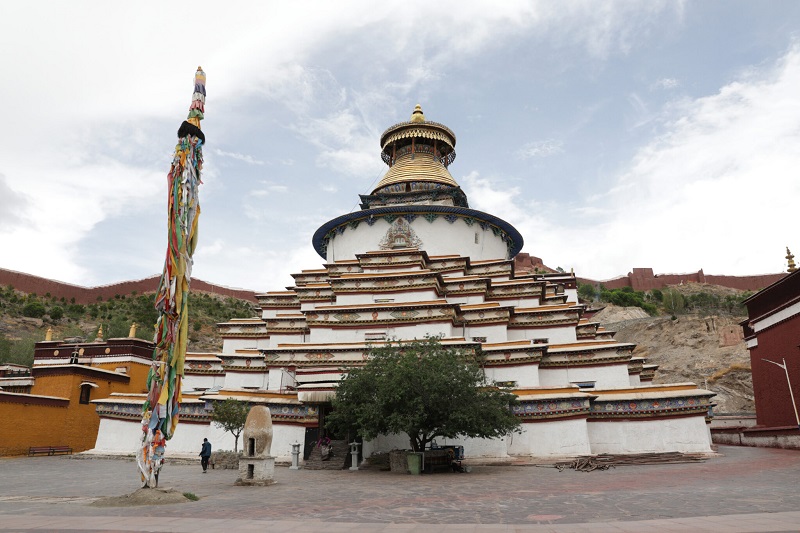
Kumbum Stupa
Stupas at Potala Palace (Lhasa)
Within the Potala Palace complex, the golden-domed stupas enshrine successive Dalai Lamas. The sheer scale, prominence and symbolism of these stupas make them powerful highlights on any Lhasa visit.
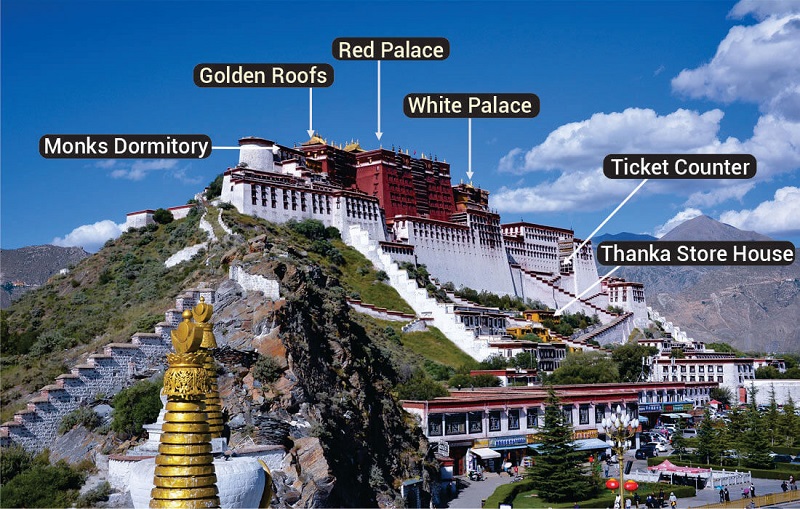
Stupas at Potala Palace
Stupa at Tashilhunpo Monastery (Shigatse)
This monastery houses stupas containing the remains of the first Dalai Lama and successive Panchen Lamas. It is a significant pilgrimage site and an illustrative example of how stupas function as memorials to revered teachers.
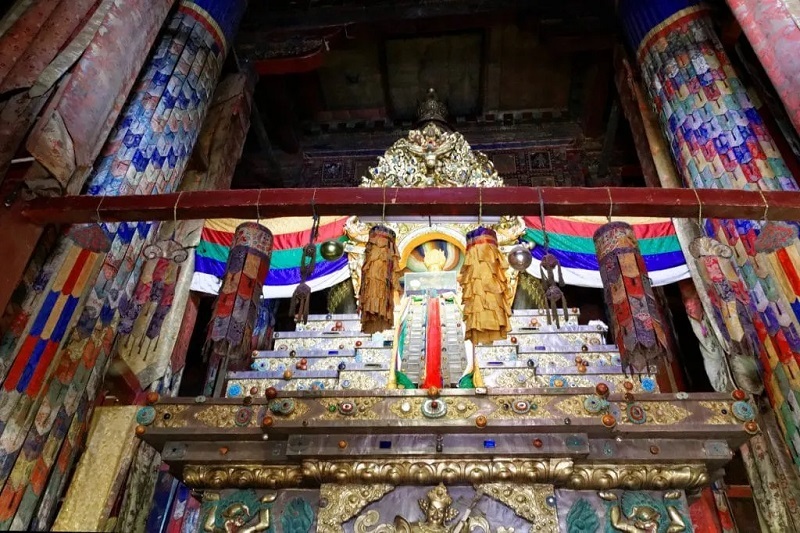
Stupa at Tashilhunpo Monastery
When travelling with a knowledgeable guide, such as offered by China Dragon Travel, you can explore the context of these stupas: their patronage, their ritual use and their place in local religious life.
Practical Tips for Visiting Tibetan Stupas
Here are some guidelines to help you prepare for and appreciate stupa visits in Tibet:
- Circumambulate clockwise: Visitors should follow the flow of pilgrims and walk around the stupa in a clockwise direction (known as kora). This gesture is part of the devotional act.
- Respect local customs: Many pilgrims spin prayer wheels, spin mani stones, chant mantras. Observing quietly and respectfully enhances the experience.
- Photography: While many stupas allow photography, always check for signs restricting photos inside chapels or of certain relics. Ask your guide.
- Altitude and weather: Some stupas are located at high altitude or exposed mountain locations. Dress in layers, bring sun protection and water.
- Footwear: In some stupa enclosures, you may need to remove shoes or avoid loud conversation. Be prepared for modest, respectful behaviour.
- Timing: Early morning or late afternoon light offers the best photo conditions. Also you’ll likely encounter fewer crowds.
- Combine with hiking or scenic stop: Many stupas are located outside town centres—combine the visit with a temple walk, ridge path or viewpoint to enrich your experience.
Why the Tibetan Stupa Endures in Modern Travel
In an era of fast-paced travel, the Tibetan stupa offers a touchstone of calm, continuity and meaning. Why does it continue to captivate modern travellers?
- Timelessness: While many attractions change, stupas embody abiding spiritual architecture. The relics, the form and the pilgrimage patterns have endured centuries.
- Symbolic Depth: Even if you are not a practitioner, the layers of meaning (birth, enlightenment, relics, merit) invite contemplation and personal connection.
- Photogenic Landmark: Against Tibetan mountain skies, whitewashed domes, gilded spires and fluttering prayer flags create memorable visuals.
- Cultural Bridge: Visiting a stupa offers a tangible intersection of Tibetan religion, history and landscape — bridging the outer journey with inner resonance.
For international travellers, the stupa becomes a meaningful symbol: a silent teacher, a reminder of impermanence, and a cultural gateway.
The Role of Stupas in a Tibet Tour with China Dragon Travel
When you plan your Tibet itinerary with a specialist like China Dragon Travel, incorporating stupa visits becomes more than a photo stop. It becomes a moment of immersion — into history, spirituality and local culture. Here’s how out agency can assist:
- Customized Itinerary: We can tailor your trip to include major stupa sites (e.g., Kumbum, Tashilhunpo, Potala) and lesser-known regional chortens in Kham or Amdo.
- Local Expert Guides: Our guides are proficient in Tibetan Buddhism, architecture and local traditions. They will explain the eight stupa types, the symbolism in their architecture and the ritual behaviours around them.
- Connections with Monasteries: We open doors to monastic settings where you might accompany pilgrims on kora, observe afternoon Puja or receive explanations from resident monks.
- Seamless Logistics: Many stupas lie in remote locations or high altitude zones. We arrange transport, permits, timing and acclimatisation so you experience them comfortably and safely.
- Photography Support & Storytelling: For travellers seeking meaningful photography (or social-media material), our team will guide you to vantage points, background context and story angles (e.g., stupa as “monument of merit” in Tibetan life).
- Spiritual Reflection: Even for non-Buddhist travellers, the visit becomes a reflective moment. We provide optional moments of quiet, context and meaning.



